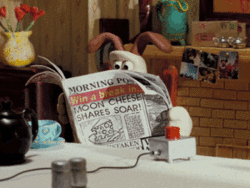 Chapter 1: The Journey Begins
Chapter 1: The Journey Begins Chapter 2: What is Stop Motion Animation.
Chapter 3: Phenakistoscope.
Chapter 4: Introduction to Zu3d.
Chapter 5: Zu3d Stop-Motion Animation - Space Journey
Chapter 6: Audio - 'Radio Face
Chapter 7: Introduction to Chroma-keying.
Chapter 8: Zu3d and Chroma-keying
Chapter 9: Claymation
Chapter 10: Animation for Learning
Chapter 11: Prepare
Chapter 12: Filming
Chapter 13: The Making of....
Chapter 14: Editing














